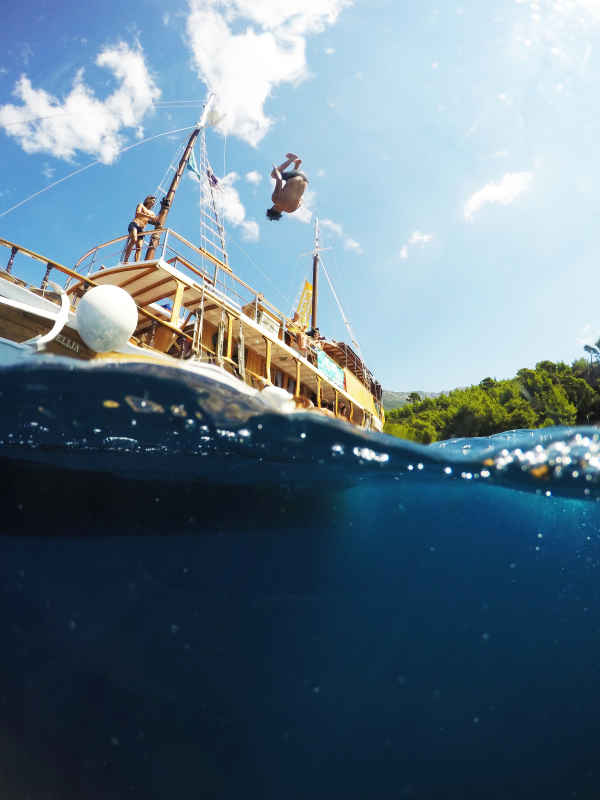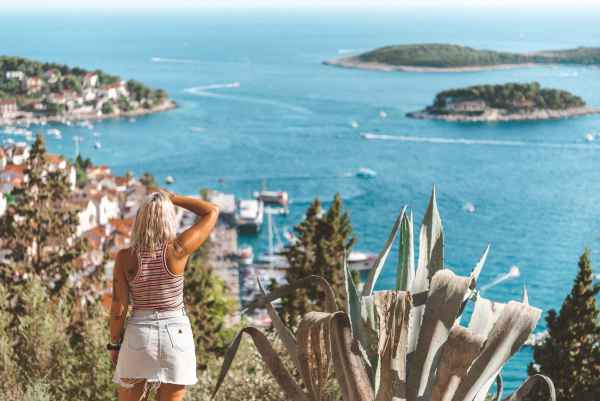
Croatia is a wicked place to travel to any time of the year, but if you’re wanting to travel during a month that’s full of insane parties, festivals galore and hot weather, try sailing Croatia in July! Here’s some FAQ's to get an insight into how to make the most of sailing and island hopping during this month…
What events are on?
July is definitely the month of parties and festivals down in Croatia. Perhaps the biggest festival of them all is Ultra Festival - something you should absolutely check out. From July 10th till 12th the biggest names in electronic music are on show in Split. In 2019 The Chainsmokers, DJ Snake, Armin van Buuren and Carl Cox were in the line-up. No doubt 2020 will also have some banging acts. There are also before and after parties scattered all around the Adriatic in association with this event.
Up and coming spots in Croatia proving to be quite popular on the international festival scene are Zrce Beach and Tisno. Zrce Beach on the island of Pag is home to festivals like Fresh Island and Day & Night festivals. Fresh Island Festival from the 6th to 8th of July features the top urban, R&B and Hip Hop talent. With artists like Snoop Dogg, Young Thug and A$AP Rocky performing there in the past you can guarantee it will be dope! Day & Night festival is returning in 2020 after having a 10 year hiatus. Aimed at those EDM and house fans out there, this festival will be running from the 27th to the 29th of July.
The town of Tisno absolutely goes off in July when Hospitality on the Beach festival comes to town. Running from the 9th to 13th of July, this festival is a highlight of the year for every drum and bass fan. SuncéBeat, from the 22ndto 29th of July has got a little something for everyone - the organisers are yet to announce their line-up but guarantee that the artists will create an experience of quality underground house, disco, techno, soul, R&B and funk.
Croatia also has events targeted at those after a bit of culture on their travels. Split, Rijeka and Dubrovnik have their own summer festivals, where traditional theatre, dance and music is exhibited around the town. In 2020, the Rijeka Summer Nights Festival will be running from late June to mid July, whereas Split and Dubrovnik festivals will start mid July until mid to late August.
How busy does it get?
July is right in the middle of the European summer, so most spots around the continent are bustling and Croatia is no exception. Beaches and attractions will be pretty packed, so it pays to arrive earlier in the day to make the most of fewer crowds. Expect most accommodation to be fairly well occupied - if you know your exact dates, book your accommodation as early as you can to avoid disappointment. If you’re the kind of person to leave booking till the last moment, it’s very possible that your first pick of choice will already be booked out, so you might have to stay a little less central. Bars and clubs are at their absolute prime at this time of year, with great music and even better vibes.
What’s the weather like?
It’s hot, so wear lots of sunscreen! A typical day will see highs of late 20°s and early 30°s, however lows can be in the early 20°s. Despite this heat it’s not uncommon for there to be rain and wind so be sure to bring a rain jacket just in case.
What should I wear?
Given the hot temperatures, wear light and breathable clothing! Streets are filled with people wearing party shirts, shorts and dresses. Although it might be tempting to walk around without a shirt or just wearing your swimmers, always cover up. Croatia is a conservative Catholic country so it’s seen as offensive to walk the streets wearing just bikinis or without a shirt. In some places, you can risk a €1000 fine. When you’re partying the night away, it’s usually fairly casual attire. Towns to get a bit more dressed up in would be Hvar and Dubrovnik, so avoid the surf singlet there. In most clubs and bars it’s totally acceptable to wear Birkenstocks or sandals, however for the fancier clubs men should opt for closed-in shoes.
What should I pack?
Be sure to pack lots of light and breathable clothes. Hats, sunnies and swimsuits are an absolute must. Pack a rainjacket just in case. There is no option to wash your clothes in a washing machine whilst on board the boat (although there are sometimes options on the islands), so be sure to bring enough clothes to last you the week.
It’s often hard to gauge what kinds of shoes to pack for sailing in Croatia, but by taking a pair of sandals/Birkenstocks, some flip-flops/jandals and a pair of closed-in shoes you will be covered for most eventualities.
Given how much you will be swimming, a beach towel is highly recommended. If you don’t want to travel with one, buy one at one of the markets in Split or the shops in Dubrovnik before you start the sail.
Whilst sailing in Croatia, there’s not always possibilities to charge your phones in your bedroom. Bringing a power pack is incredibly useful for those moments when you want to take a quick snap but your phone is dying, and power boards are also useful when sharing a room with a roommate.
The boats are licensed bars which means that no alcohol or drinks are to be brought onboard. Local authorities can at any time come onto the ship and search rooms, leading to massive fines for the boat crew if alcohol is found. The boat crew look after you throughout the week so look after them. It’s cool to be kind, so don’t be disrespectful and bring on your own drinks.
What do things cost?
Unless you’ve booked onto the “All-In Croatia Sail” which includes all meals and 8 drinks on board, you will have brekkie and lunch on board. Dinner at restaurants tends to cost between 50 – 200 kunas, depending on what you order. A side of fries could cost around 15 kunas, a pasta for 70 kunas and a mixed meat platter for 2 costing 200 kunas for example. Remember to tip at the restaurant – the going rate is around 5 – 10 kunas per person.
Most sailing trips head to Hora Farm, a beautiful vineyard in Stari Grad where a traditional meal and variety of wines for those keen will cost between 100 – 200 kunas.
To quench your thirst, the boats and bars have got you covered. Drinks tend to be from 15 to 120 kunas (for a 1 litre cocktail).
National park entrance in Mljet costs 125 kuna for adults and 70 kuna for students with a valid ID. Bike or kayak hire here ranges from 50-100. If you want to do the Game of Thrones walking tour in Dubrovnik, that will cost 150 kunas.
Don’t forget to tip your boat crew. In Croatia, the national wage average is 684 Euros per month. That’s around $1,100AUD earnt per month. Therefore, tipping is incredibly important! It’s typical to tip 50 to 100 kunas per crew member. The crews work above and beyond for the passengers, so don’t forget to show them how much you appreciate them.
*All costs are current as of time of writing.







